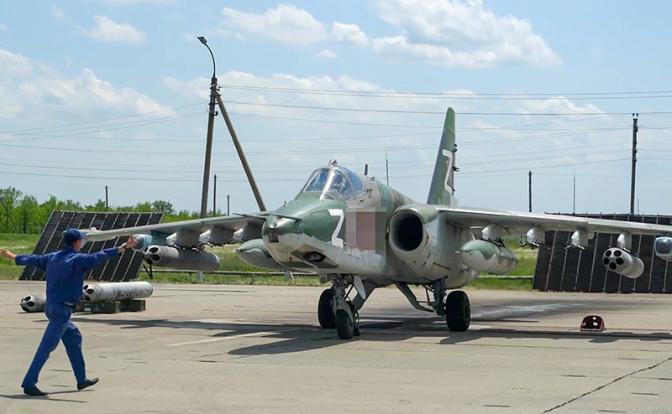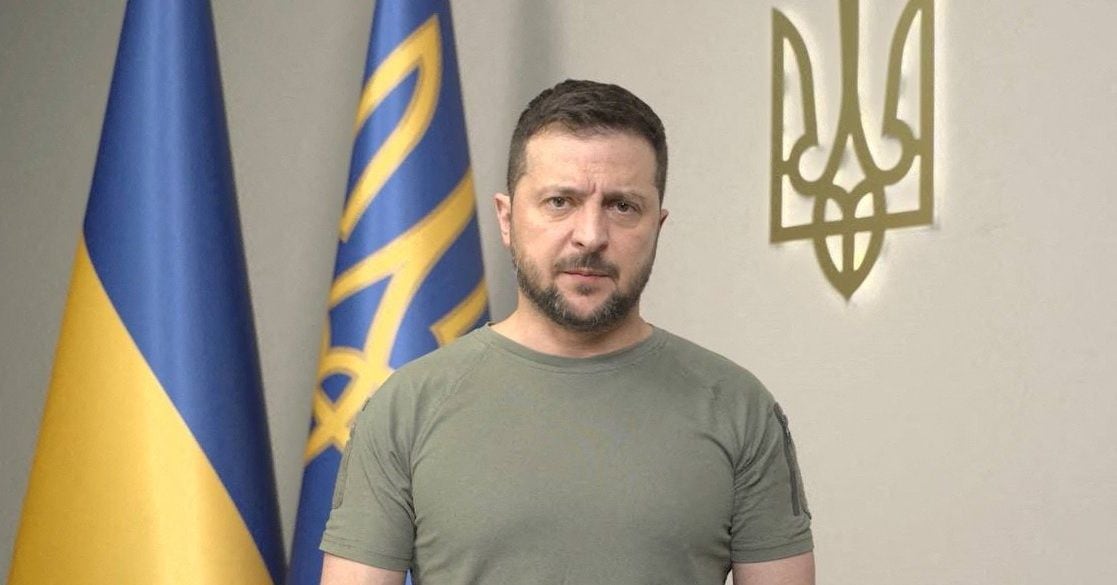Could I also ask if anyone knows how active the Russian airforce is over Ukraine. Have the Ukranians got any western air defence systems that the Russians have to worry about.
Scott Ritter clarifies Russia's use of its air force @11:57 in this Sept. 22 interview:
There were more questions about the same. Came across one answer that makes sense, but I cannot tell how accurate it is. Published a few days ago, excerpts translated below.
Давно завоевав превосходство в воздухе, мы даже в отчаянные моменты не рискуем далеко залетать за линию фронта

svpressa.ru
Kiev's "partisanship" in its own skies has driven our combat aviation to a dead end
Having long ago gained air superiority, even in desperate moments we do not risk to fly far beyond the front line
Sergey Ishchenko
For the general public one of the biggest mysteries of the increasingly evidently stalled "Special Operation Z": why does our overwhelming air superiority, long won in Ukraine, have little effect on the course of combat operations? /.../
Perhaps one can try to find a clue in the seemingly stunning fact recently shared by the well-known military expert, retired colonel Semyon Bagdasarov.
Semyon Arkadyevich wondered: how did as many as 232 Polish T-72M1R tanks have recently appeared in the combat zone completely unhindered from our side? ... Why are they unloading so freely?
/.../ Besides, with our pilots' means of destruction it is not necessary for aircraft to approach even the unloading area. Hit a stationary Ukrainian echelon with tanks with high-precision missiles. And the battle with Polish armoured "presents" will be over before it has even begun. No, for some reason they did not strike that time. ...
How can such things happen today in the zone of special operations under conditions of our air superiority?
In theory, there can be only two reasons for that. The first one is simply the astounding short-sightedness of our military intelligence service, which failed to see any unloading of the echelon. The second reason is the fear of the command of the special operation for the fate of the assault aircraft and bombers, which otherwise would have been sent behind the front line.
We do not know which of our assumptions is closer to the truth. However, there is good reason to believe that the second is more likely.
Because it is a fact:
our combat aviation has virtually stopped striking in the operational depths of the enemy defences since about May. Russian helicopters, attack aircraft and bombers work almost exclusively along the front lines. Air strikes are carried out on a daily basis. But only against trenches and enemy strongholds, which our infantry is storming or preparing to storm.
And if it is necessary to hit important targets located far away ... then only long-range cruise missiles are used.
Do we protect our fighting vehicles and lives of our pilots? Naturally. And rightly so. But why is it that even after the long-time conquest of absolute air superiority over the Armed Forces of the Ukrainian Armed Forces, the danger of flights over the territory of Ukraine remains unacceptably high for our Air Force?
This is no longer a mystery. Let's face it: over the past seven months of special operations we have not managed to defeat that country's air defence system. To weaken it in the first days and weeks of fighting, yes, we have succeeded. But to liquidate it as a notable factor of enemy resistance - no.
Repeatedly scorned in Russia after 2014 for its technical and organisational backwardness, Ukraine's air defence, almost exclusively equipped with long-outdated former Soviet weapons, still makes Moscow reckon with itself today. Clearly,
not on its own, but with the support of the best US airspace monitoring information system in the world, which was operating in round-the-clock mode long before February 2022 in Kiev's interests. And it continues to work to this day. Although
in a very unusual mode for us.
The problem is that
Ukrainian SAMs have long since switched to semi-guerrilla, that have proved very effective in the current environment in working against us "from ambush". That is to say,
their own radar antennas almost do not emit any signals. That is why they are practically impervious even to the newest Russian Kh-31PK high-speed anti-radar missiles that were created in 2009. They are designed to lock onto the enemy's radar signals. And to hit them at long range without missing. But
these excellent Russian missiles are simply powerless if there is no signal on the air at all at the moment of attack.
But if Ukrainian SAM stations are almost always switched off, then how do they detect, follow and shoot down our approaching cruise missiles, planes and helicopters?
The secret is that Ukraine's air defence system is integrated with the NATO joint air defence system in Europe NADGE [~
probably meant NATINADS ~] and the US tactical aviation control system on the continent.
Data are supplied online to the Ukrainian army's anti-aircraft defence gunners by numerous E-3A "AWACS" reconnaissance planes, which, in their own interest, are constantly flying over Poland, Romania, Bulgaria and the Black Sea.
Any departure of any Russian aircraft from an airfield bordering Ukraine is detected by this watchful electronic "eye" of the United States as soon as the front landing gear struts off the concrete surface somewhere near Millerovo or Kursk. The most detailed data about the parameters of movement of the potential target immediately
becomes possession of the Ukrainian SAM system. For some minutes they switch their equipment on only when a Russian plane enters the engagement zone. And they switch it off as soon as the launched anti-aircraft missile leaves the launcher.
And what is actually the backwardness of Ukraine's air defence? In reality, the backwardness, of course, has not gone anywhere.
If Americans had not interfered, we would have squashed this air defence system like a bug. Even despite the fact that by the beginning of our special operation the skies of the hostile country were guarded by up to 24-29 divisions of antiaircraft missile defense systems S-300PT/PS, up to ten divisions of Buk-M1, and small number of short-range air defense systems Tor in the basic Soviet variant (firing range of about 10 kilometres). The rest (the Shilka and Tunguska SAMs and the Osa-AKM short-range SAMs) could be disregarded due to their low combat effectiveness.
Of course, having planned in advance to deprive the Ukrainian sky of any anti-aircraft cover, we received and analysed in advance all the necessary information about the locations of these weapons. We planned and carried out a fire strike against them. But the results of the strikes, as it soon became clear, were far from what was expected.
As has now become clear, Kyiv learned in advance of the start of the Russian special operation. Surely with the input from of American and British intelligence. The anti-aircraft missile systems had been removed in advance from their launch positions to secure shelters that had been prepared well in advance. So were their combat crews.
Almost certainly for the same reason our first, and especially crushing, missile attack also fell to a great extent on the empty military airfields of the Army. The regular car parks of combat planes and helicopters were also almost empty. At any rate, giving rise to doubts about the capabilities of Russian intelligence, so it is now told with great satisfaction in Kyiv.
In the ensuing battles, of course, despite American intrigues, we thoroughly thinned out Ukraine's combat aviation and air defence system. However, we never managed to suppress them completely. That is why we ourselves fly over there with obvious caution.
Here is how Michael Coffman, a leading researcher at the Center for a New American Security in Washington, D.C., comments on the current situation over Ukraine: "Russian aviation, which had extensive combat experience in Syria and modern weaponry, seemed destined to become a decisive tool in the war against an enemy that had no such experience (and modern weaponry). However, the Syrian experience was very specific - almost testing ground: the enemy had no high-altitude air defence and only a small number of man-portable anti-aircraft systems capable of shooting down low-altitude targets.
And further: "Russian aircraft could strike safely from medium altitudes - including unguided munitions (with the help of new targeting systems). No system of countering and suppressing air defence was established in the Russian Air and Space Forces (VKS). After the first successes of the Russian aviation near Kherson and Melitopol, it became clear that in other places saturated with high-altitude air defence, the advantage of the air force was not fully operational."
"At the beginning of March, Russian aviation suffered relatively heavy losses near Chernihiv, Kharkiv, Sumy and Mykolaiv," Kofman continues. - After that, its operations from medium altitudes in the enemy's close rear actually ceased. Since then Russian aviation has been operating mainly from low altitudes (as well as Ukrainian aviation) on the line of contact. As a result, the Russian army is still unable to effectively counter the transfer of reserves, the supplying of the Ukrainian army and the fire of its long-range artillery.
[end]
BTW, it may be not easy for the Russia to solve the problem. Reuters just published:
President Volodymyr Zelenskiy said in an interview broadcast on Sunday that Ukraine had received sophisticated air defence systems from the United States.

www.reuters.com
Sept 25 (Reuters) - President Volodymyr Zelenskiy said in an interview broadcast on Sunday that Ukraine had received sophisticated air defence systems from the United States.
It was the first acknowledgment that Ukraine had received the National Advanced Surface-to-Air Missile System (NASAMS), long sought by Kyiv and whose shipment was approved by Washington late last month.
Or, maybe because it will work in the "usual" way, it can be easier to eliminate it?



